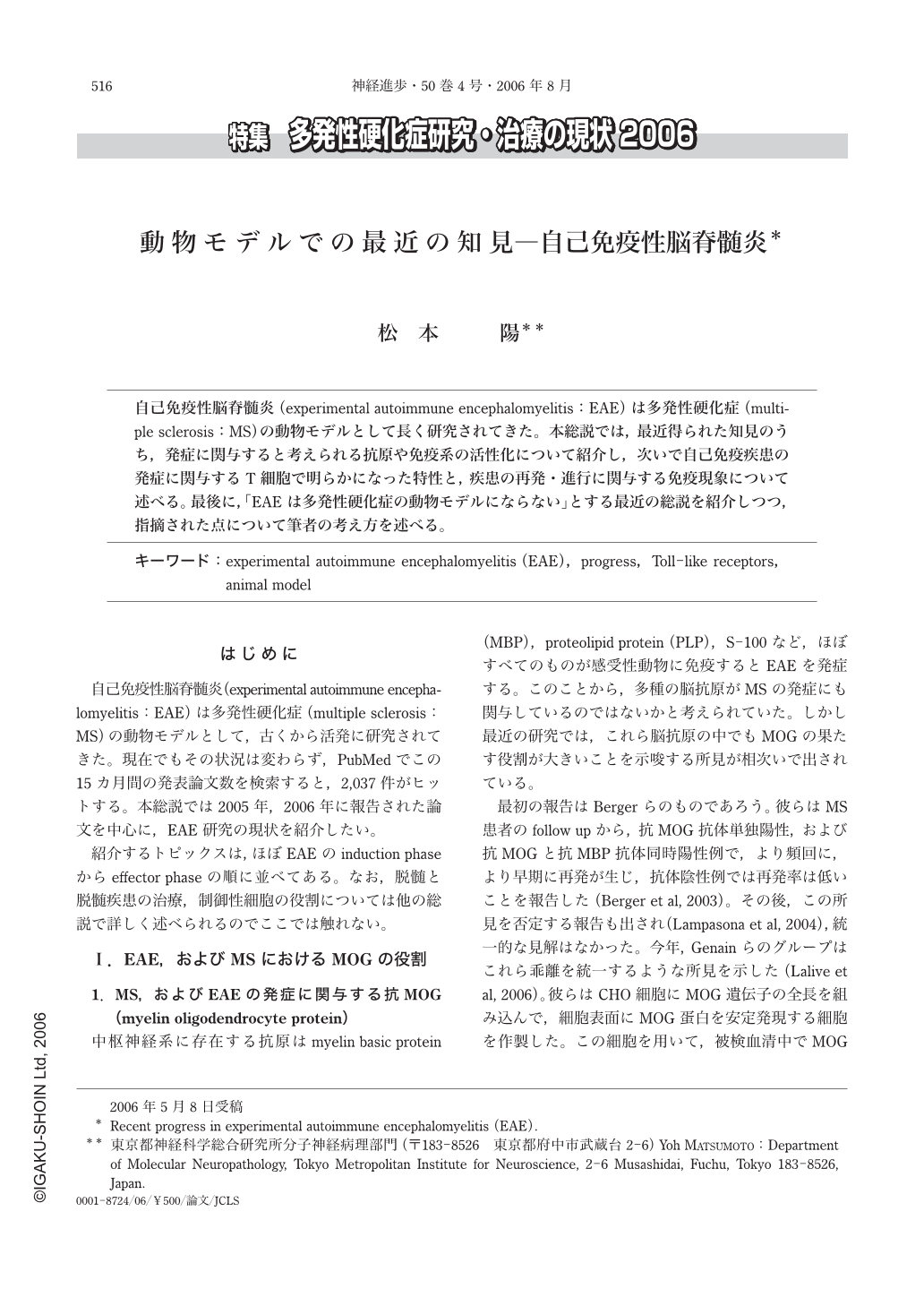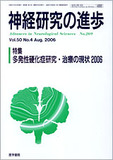Japanese
English
- 有料閲覧
- Abstract 文献概要
- 1ページ目 Look Inside
- 参考文献 Reference
自己免疫性脳脊髄炎(experimental autoimmune encephalomyelitis:EAE)は多発性硬化症(multiple sclerosis:MS)の動物モデルとして長く研究されてきた。本総説では,最近得られた知見のうち,発症に関与すると考えられる抗原や免疫系の活性化について紹介し,次いで自己免疫疾患の発症に関与するT細胞で明らかになった特性と,疾患の再発・進行に関与する免疫現象について述べる。最後に,「EAEは多発性硬化症の動物モデルにならない」とする最近の総説を紹介しつつ,指摘された点について筆者の考え方を述べる。
EAE has been extensively investigated as an animal model for multiple sclerosis(MS). In the present review, recent progress in the EAE research has been introduced. First, there is increasing evidence showing that myelin oligodendrocyte glycoprotein play an important role as an encephalitogenic antigen in both MS and EAE. It is also known that Toll-like receptors(TLR)expressed on cells in the lymphoid organ and central nervous system are involved in the development of EAE. Second, the unique aspects of T cells that are able to induce autoimmune diseases including EAE and the immune mechanisms of relapse and progression of EAE are introduced. Finally, the opinions in a review entitled “Experimental allergic encephalomyelitis:A misleading model of multiple sclerosis” are introduced and the responses to these criticisms are shown.

Copyright © 2006, Igaku-Shoin Ltd. All rights reserved.


